10 glycolysis steps to remember in easy way
by egpat 21-05-2017
Where do we get energy every day? Undoubtedly it is from diet and carbohydrates play a key role in supplying energy by releasing glucose into our body which can undergo a process called glycolysis to release energy. Glycolysis is the process of breakdown of glucose into small molecule like pyruvate generating the energy in the form of ATP.

Glucose to pyruvate
First let’s see what happens with overall steps in glycolysis. Simply glucose is converted into pyruvate under aerobic conditions.

Under anaerobic conditions, this pyruvate is converted into lactate by lactate dehydrogenase enzyme. This is an abnormal conditions where glycolysis is not coupled with kreb's cycle and respiratory chain due to lack of oxygen.
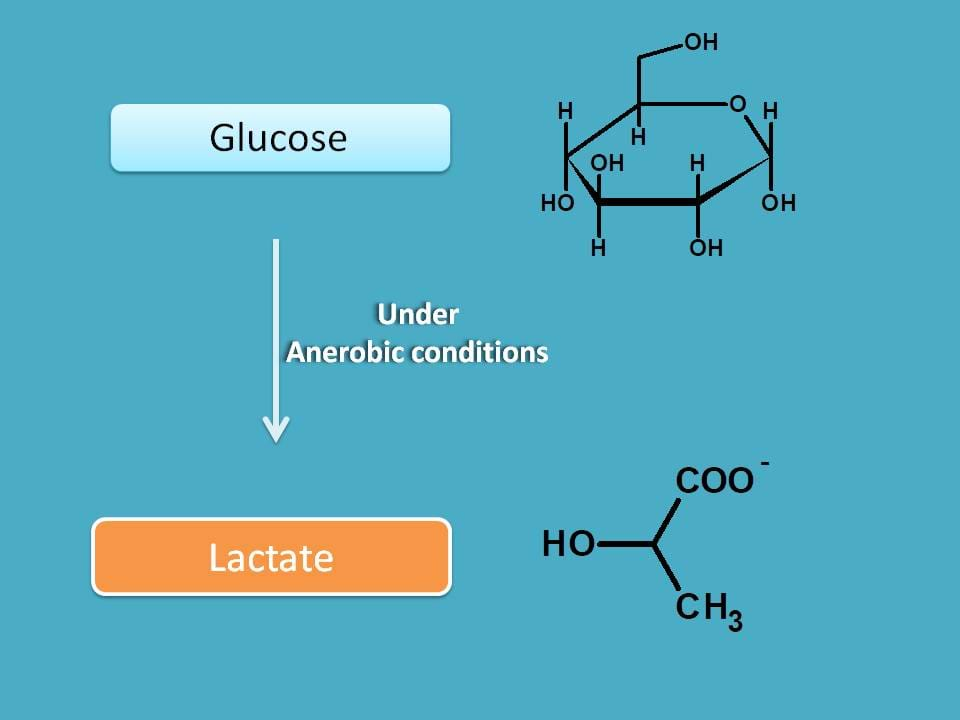
Under normal physiological conditions, glucose is converted into pyruvate by glycolysis. So, let's see here how this glucose is converted into pyruvate. We know that glucose is six carbon compound where as pyruvate contains three carbons. So, it is easily understandable that ONE glucose molecule produces TWO pyruvate molecules with each cycle of glycolysis.

Fine, now let’s compare the structures of glucose and pyruvate and let’s see what broad changes occur in these two molecules during glycolysis pathway.
Glucose is an aldose having aldehyde group at first position whereas pyruvate is an α-keto acid with carboxylic acid at first position.
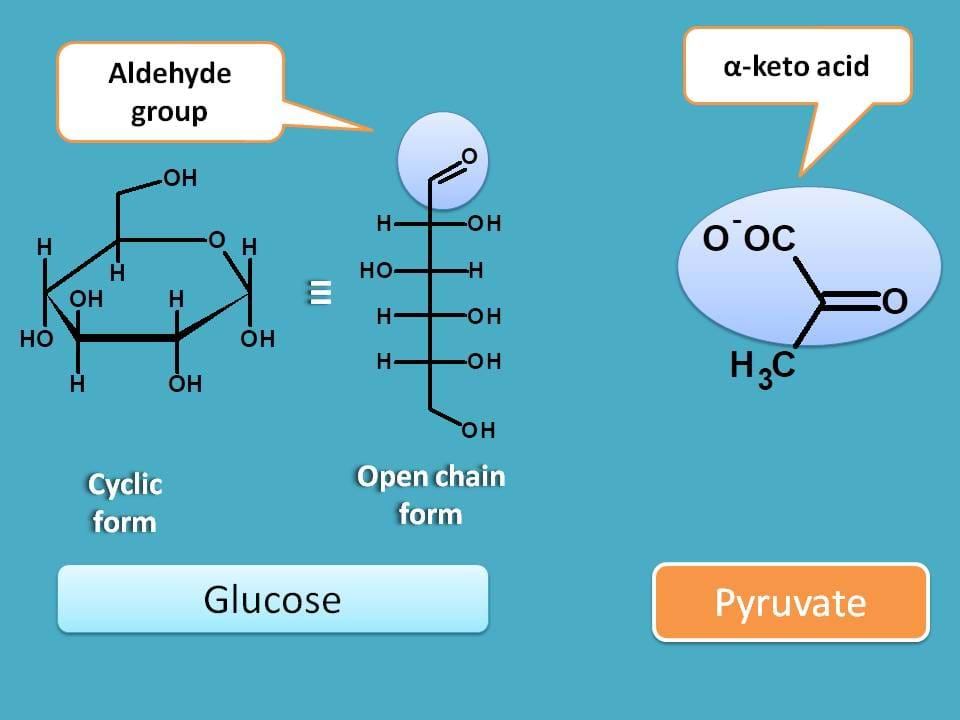
So, what do you guess?
In a simple way, glucose is cleaved into two identical halves and each half undergoes three structural modifications.
- Oxidation of aldehyde to carboxylic acid
- Oxidation of alcohol to keto group at second position
- Removal of hydroxyl group at third position
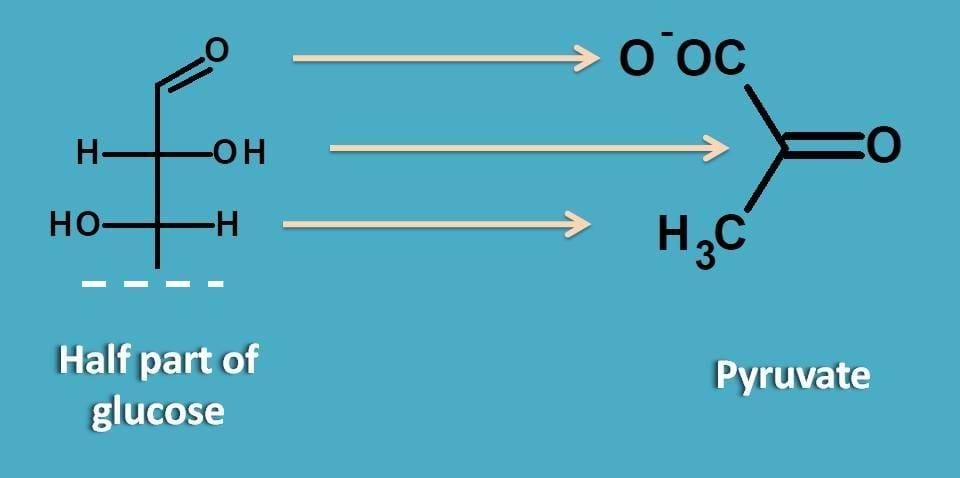
We will see in detail how these changes can bring the pyruvate as the final product in glycolysis pathway under aerobic conditions.
Is glycolysis produce energy or consume energy?
One more question that may peep into your mind is that whether glycolysis consumes any energy or not?
Certainly it consumes energy but later releases energy. Two crucial steps in glycolysis are endergogenic requiring ATP molecules, one at conversion of glucose to glucose-6-phosphate and another is at conversion of fructose-6-phosphate to its biphosphate. Later steps in glycolysis release energy making the overall effect as releasing the energy in the form of ATP from glucose.
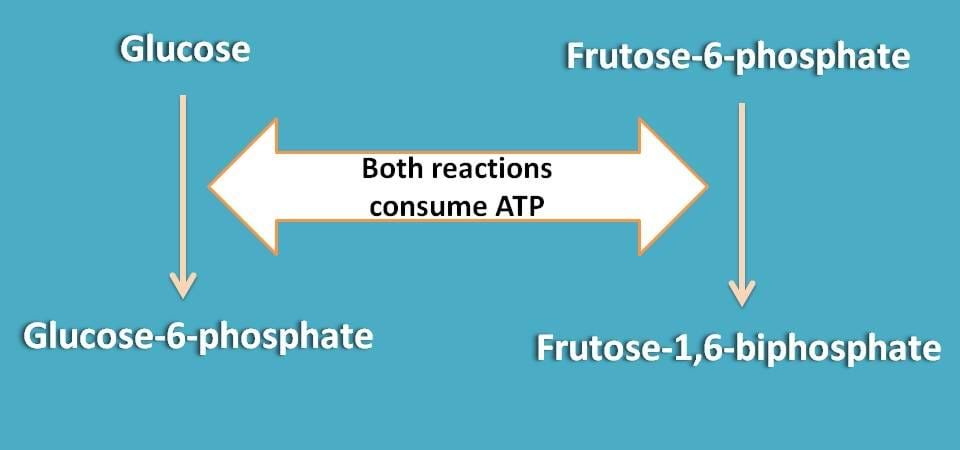
Steps in glycolysis
The 10 steps of glycolysis hence can be divided into energy consuming and energy releasing steps such as
- Preparatory phase
- Pay off phase
Preparatory phase is energy invest phase and includes all the steps from 1 to 5 in glycolysis pathway that consume energy at step 1 and 3.
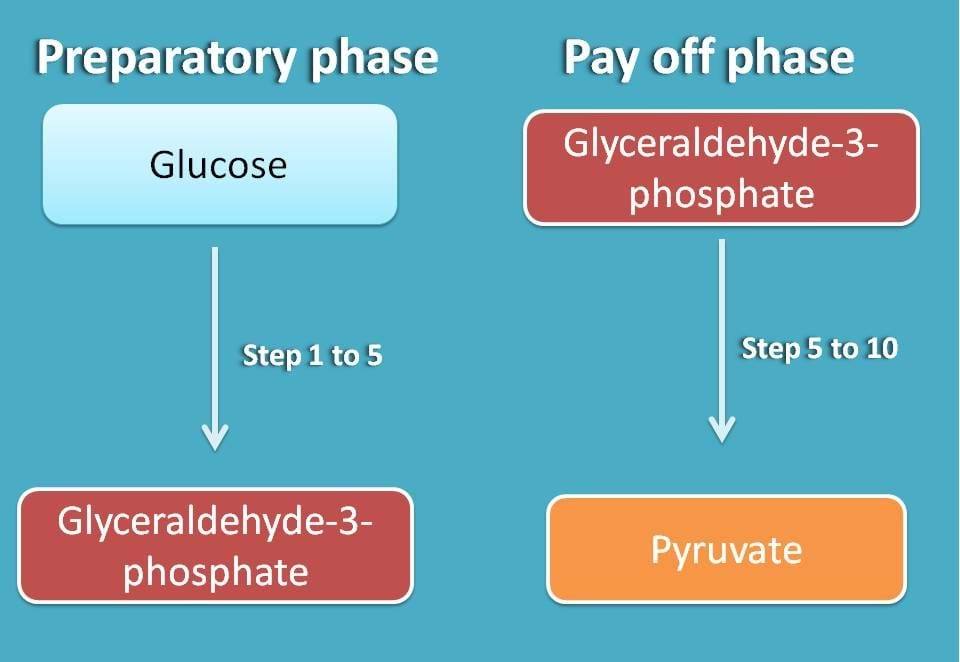
Pay off phase, on the other hand, releases energy and includes steps from 6 to 10.
So, let’s explore each step in glycolysis and how we can remember them easily.
Step 1: Conversion of glucose to glucose-6-phosphate
The first step in the glycolysis is the phosphorylation of glucose. Since phosphorous group is supplied to glucose by conversion of ATP to ADP, this step is energy consuming.
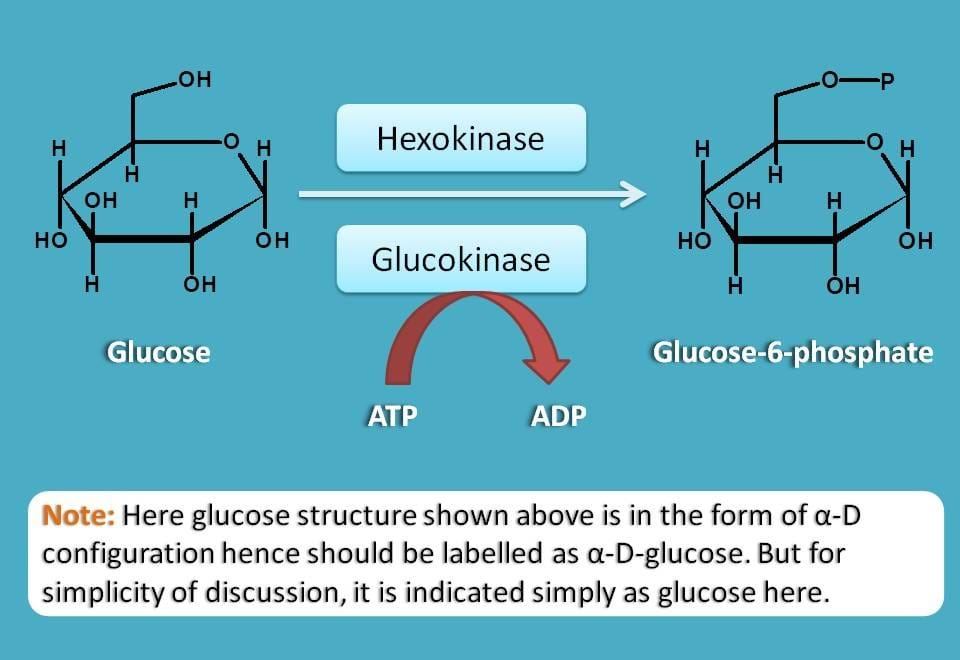
This phosphorylation of glucose is mediated by the enzyme hexokinase which produces irreversible phosphorylation of glucose to glucose-6-phosphate
Phosphorylation easily takes place at 6th position as hydroxyl group at this carbon is out of the ring.
Step 2: Conversion of glucose-6-phosphate to fructose-6-phosphate
Next step is to convert glucose-6-phosphate to fructose-6-phosphate. Why we need this step?
Let's see it in detail. Earlier we have discussed that glucose is to be cleaved into two equal halves in glycolysis. Is it possible with glucose? No, certainly not. Glucose is a 6 membered ring and when it is cleaved it give two unequal halves, one half containing two carbons and another half with 3 carbons. On the other hand, fructose is a five membered ring that can give two equal halves on cleavage.
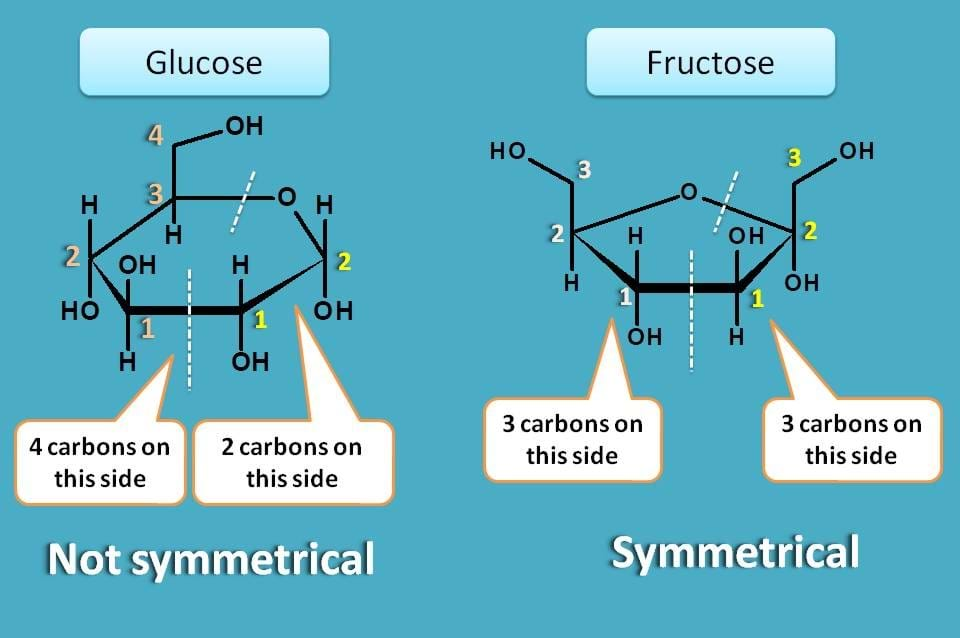
So, glucose-6-phosphate is converted into fructose-6-phosphate which brings better cleavage of ring in the subsequent steps.
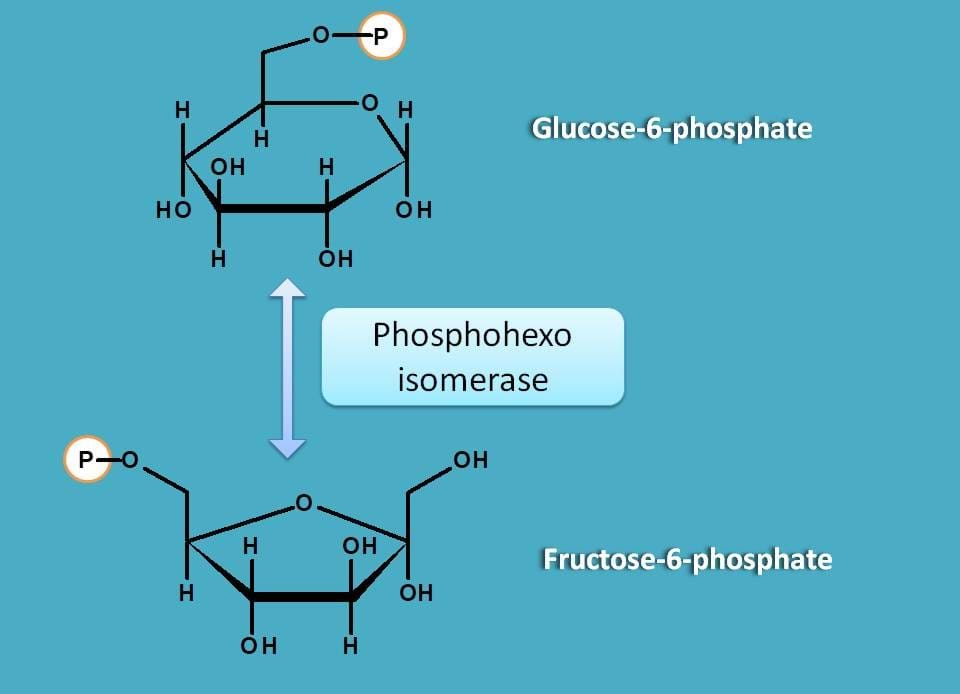
Since this step involves conversion of 6-membered ring (pyranose) to 5-membered ring (furanose) with same chemical formula, it is an isomerisation step and mediated by the enzyme phosphohexose isomerase.
Step 3: Conversion of fructose-6-phosphate to fructose-1,6-biphosphate
If you observe fructose-6-phosphate is not completely balanced as it has phosphate group at 6th position but not at 1st position.
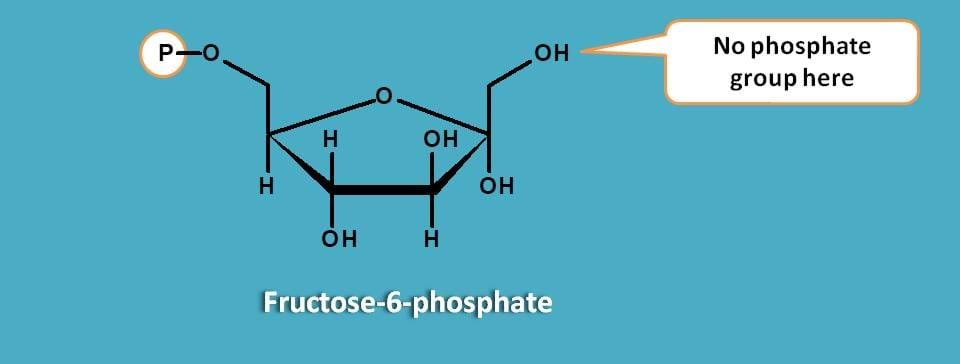
So let’s fill the gap by phosphorylation at 1st position carried by the enzyme phosphofructo kinase-I. Just like step1, this step also consumes energy in the form of ATP.

Step 4: Cleavage of fructose-1,6-biphosphate
Now everything is set ready, let’s cut the cake and slice the above molecule into two pieces of equal length. This is an important step mediated by the enzyme ALDOLASE.

You can observe that during cleavage it produces two molecules one with ketone and another with aldehyde function group are formed. The aldehyde produced is glyceraldehyde-3-phosphate while ketone is dihdroxy acetone phosphate.
Step 5: Isomerisation of dihydroxy acetone phosphate
It’s fine that glucose is cleaved into two molecules, but who leads the remaining story. Definitely, the role is played by aldose, glyceraldehyde-3-phosphate.
Then what about dihdroxy acetone phosphate?
Simply, it is isomerised into glyceraldehydes-3-phosphate by triose phosphate isomerase.
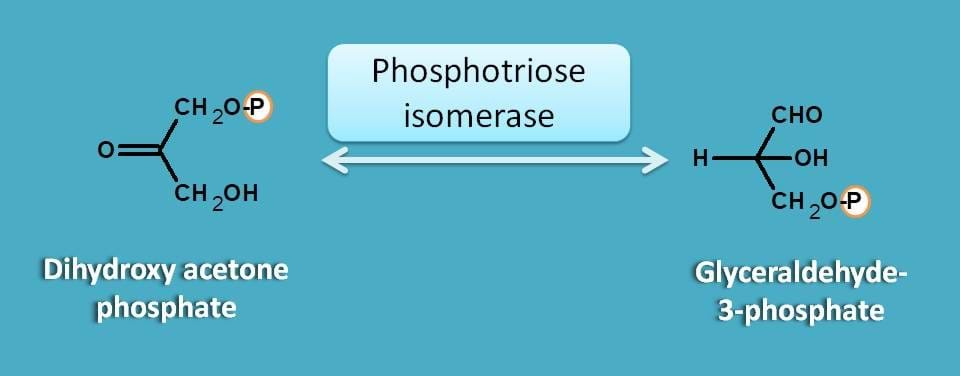
Pay off phase
Step 6: Oxidation of glyceraldehyde-3-phosphate to 1,3-biphospho glycerate
Now pay off phase starts, producing all energy releasing steps. First step in pay off phase is the oxidative phosphorylation of glyceraldehyde-3-phosphate. This step involves two simultaneous modifications such as oxidation and subsequent phosphorylation of aldehyde group.

Oxidation is carried by NAD+ which is converted then into NADH and phosphorylation is mediated by inorganic phosphate.
Since ATP is not involved in phosphorylation, energy is not consumed. Instead, the released NADH enters into oxidation releasing 2.5 ATP molecules. So, for each glucose molecule 2 x 2.5=5 ATP molecules are released in this step.
Step 7: Conversion of 1,3-biphospho glycerate to 3-phsophoglycerate
This is the first step in the pay off phase that releases ATP at substrate level. The phosphoryl group at 1st position is transferred to ADP converting it into ATP releasing energy.

Again remember that one molecule of glucose releases 2 ATP molecules in this step
Step 8: Conversion of 3-phsophoglycerate to 2-phosphoglycerate
As we have discussed earlier, the end product in aerobic glycolysis pathway is pyruvate which contains a keto group at second position. The phosphate group which is removed later should be at second position.

This step is mutation of phosphate group from 3rd position to 2nd position is mediated by phosphoglycerate mutase
Step 9: Conversion of 2-phosphoglycerate to phosphoenol pyruvate
Now OH group is at 3rd position and hydrogen at 2nd position are removed as water molecule by the enzyme enolase to form phosphoenol pyruvate.
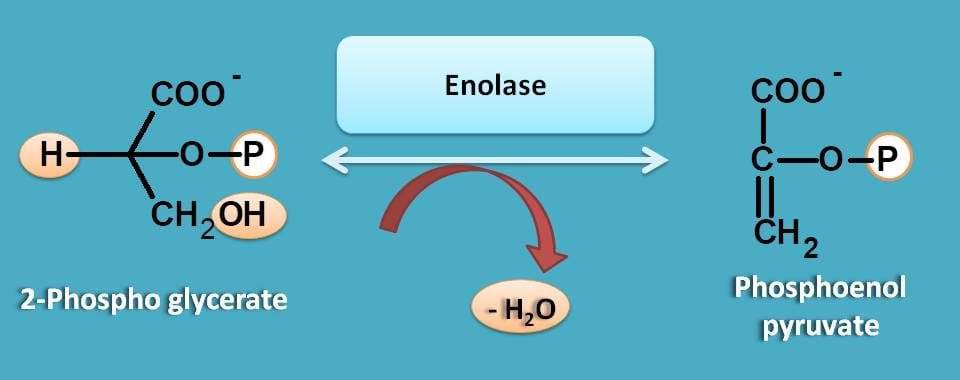
Notice that phosphate group is still at 2nd position which is removed in the next step to release energy.
Step 10: Conversion of phosphoenol pyruvate to pyruvate
The phosphate group at 2nd position is removed by pyruvate kinase enzyme and the released phosphorous group is added to ADP releasing ATP.
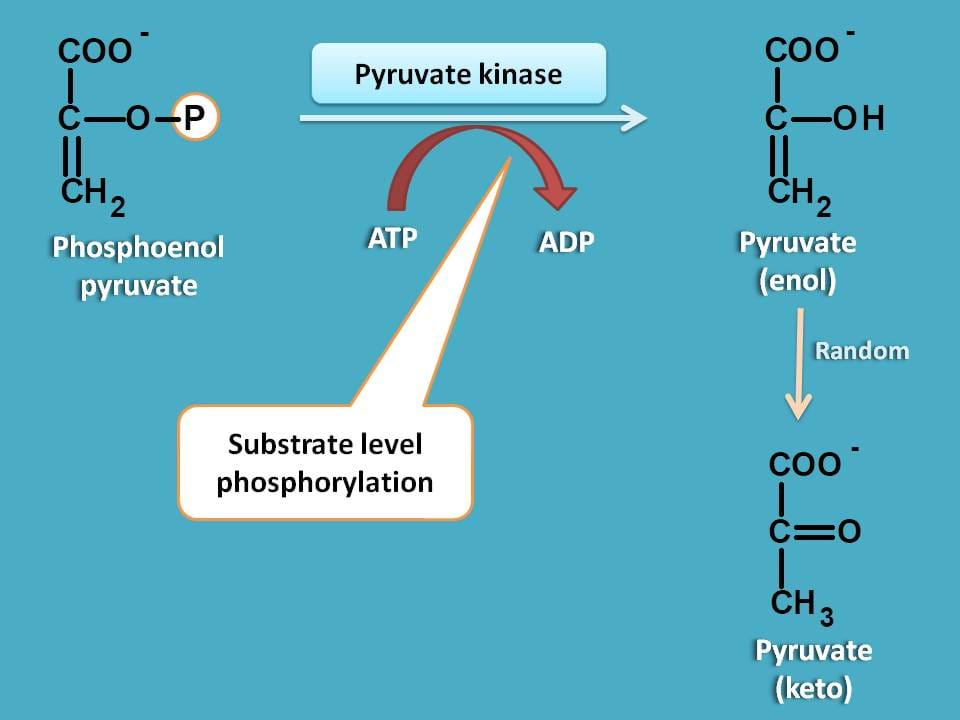
Hence just like step 7, this is a substrate level phosphorylation releasing ATP molecule directly. Here pyruvate is initially formed as enol but later rapidly converted into its tautomer, keto form.
In this way, glucose is converted finally into pyruvate under aerobic conditions. This pyruvate then enters into citric acid cycle by converting into acetyl CoA.